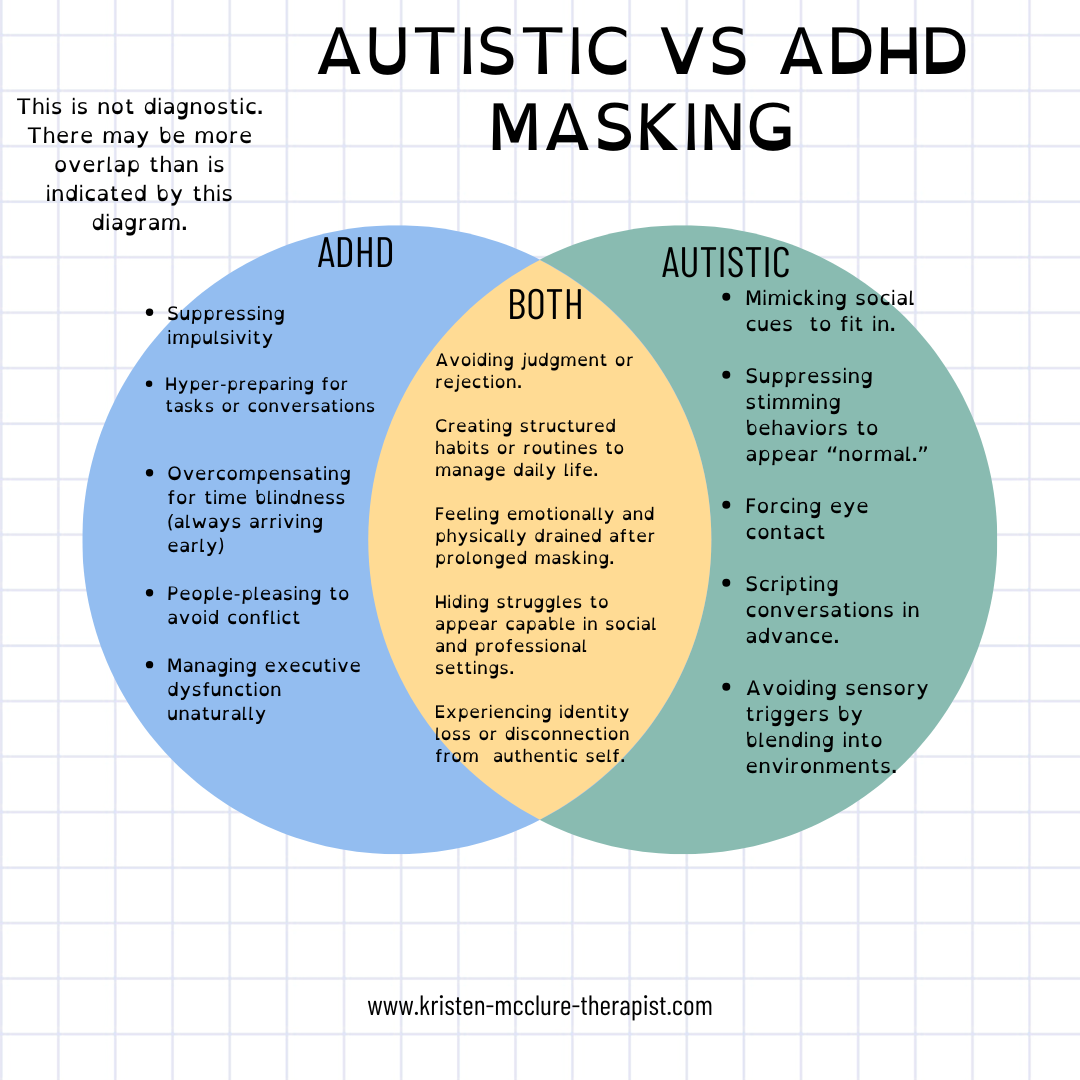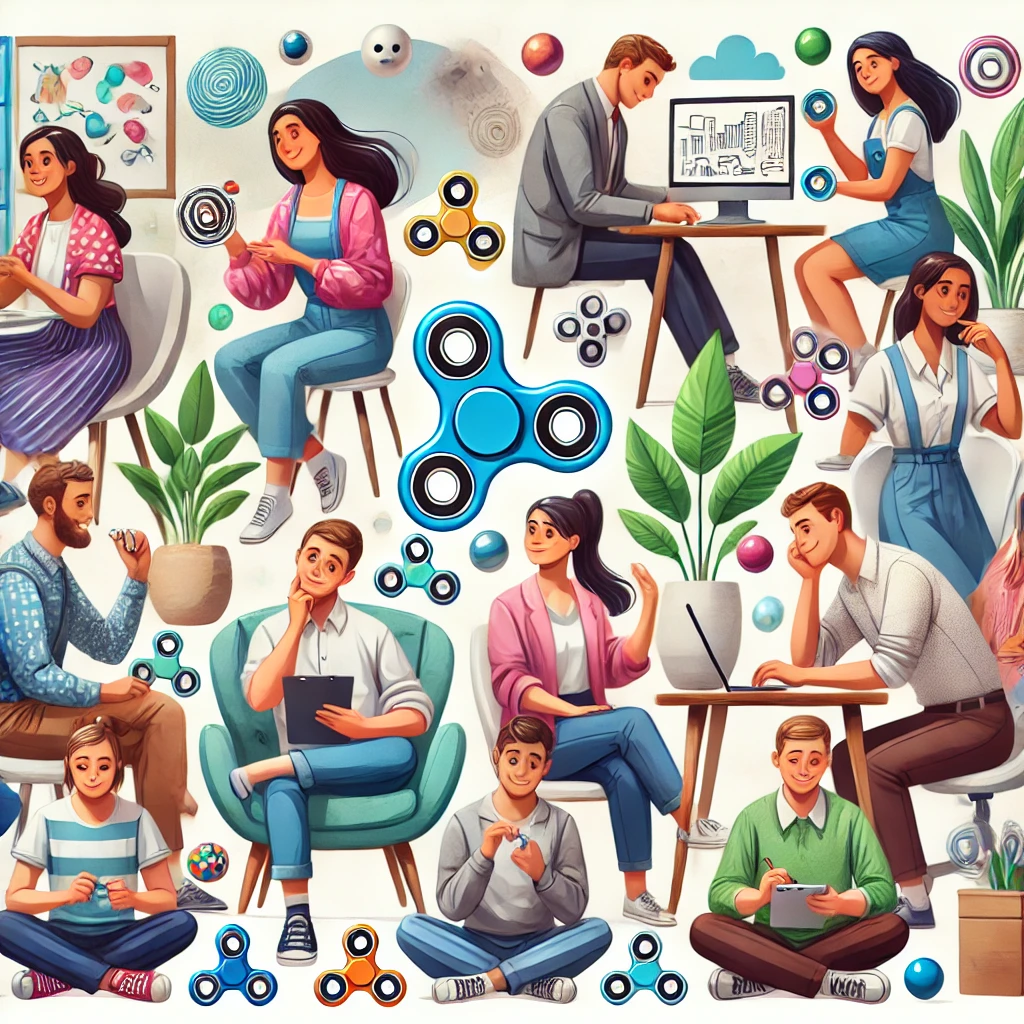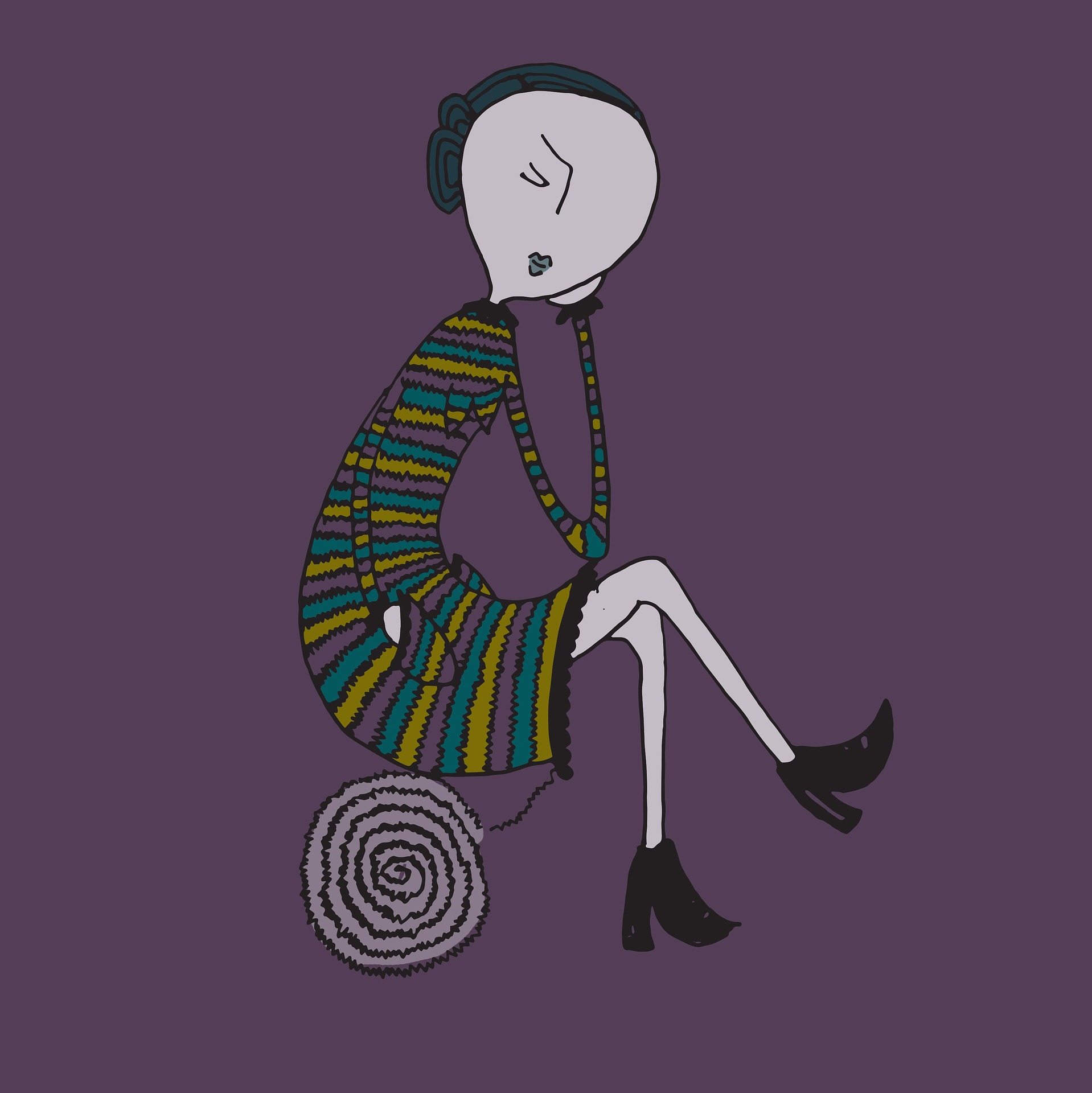
ADHD Masking vs. Autistic Masking in Women: Understanding the Differences, Similarities, and Impacts
ADHD Masking vs. Autistic Masking in Women

Introduction: What Does Masking Really Mean?
If you’ve ever felt like you had to hide parts of yourself to fit in or keep up with others, you’re not alone. This is what many neurodivergent people call “masking.” It’s a way of adapting to meet the expectations of a world that often doesn’t make room for the way our brains work.
Masking is often linked to autism, but people with ADHD do it too—just in different ways and for different reasons. In this blog, we’ll explore what masking looks like for ADHD and autistic women, the similarities and differences, and what it all means for your daily life.
What is Masking?
Masking is about blending in. It’s the little (and sometimes big) adjustments you make to appear more “typical” or to avoid being judged. Maybe you rehearse what you’ll say in a meeting so you don’t blurt something out. Or maybe you mimic someone’s tone or body language because it feels like the safest option.
Here’s how it often shows up:
- For Autistic People: Masking might mean forcing eye contact, copying facial expressions, or trying to hide stimming (like tapping your fingers or rocking) to seem “normal.”
- For People with ADHD: It’s often about looking organized and “on top of things,” even if it takes hours of preparation or exhausting effort. You might double-check everything or try to tone down your energy in social situations.
At its core, masking is a survival tool. It’s a way to avoid judgment, connect with others, or manage the overwhelm that comes with being neurodivergent in a neurotypical world.
Reflection: How Do You Mask?

Shared Reasons for Masking
Whether you’re dealing with ADHD or autism, masking often comes from the same place: a desire to fit in, avoid judgment, and feel accepted.
1. Wanting to Belong
No one likes to feel out of place. Masking can feel like a way to connect with others and avoid standing out too much.
2. Avoiding Judgment
Many women feel pressure to appear calm, collected, and “together” all the time. Masking helps dodge those frustrating labels like “lazy,” “awkward,” or “too much.”
3. Managing Overwhelm
Both ADHD and autistic women might use masking to navigate busy environments, manage sensory overload, or keep emotions in check.
What’s Different About ADHD and Autistic Masking?
While the reasons for masking can be similar, how it shows up is where things start to differ.
ADHD Masking
ADHD masking is all about appearing organized, focused, and in control—qualities that don’t come easily with ADHD. For example:
- Hyper-Preparing: Rehearsing what to say or do, sometimes to the point of exhaustion.
- Holding Back Energy: Trying not to seem “too much” by toning down enthusiasm or impulsive behavior.
- People-Pleasing: Saying yes to everything or trying to avoid conflict by agreeing with others, even when it’s not how you feel.
Autistic Masking
Autistic masking focuses more on blending in socially. It might look like this:
- Copying Social Cues: Mimicking someone’s tone of voice, gestures, or expressions to seem more “typical.”
- Suppressing Stimming: Hiding repetitive movements like tapping, rocking, or hand-flapping, even if it helps self-soothe.
- Scripting Conversations: Preparing what to say in advance to avoid awkward pauses or confusion.
How Do ADHD and Autism Overlap?
If you’ve ever felt like both ADHD and autism describe parts of your experience, you’re not alone. Masking behaviors often overlap in ways that can make it hard to tell where one ends and the other begins.
Here are a few examples of shared behaviors:
- Mirroring: Copying others’ behavior to fit in.
- Burnout: Feeling completely drained from masking all day.
- Avoiding Vulnerability: Struggling to let people see the “real you,” even with close friends or family.
- Routines and Habits: Relying on structure to feel grounded, whether it’s to manage sensory needs (autism) or executive dysfunction (ADHD).
The Impact of Masking
Masking can be helpful in certain situations, but doing it all the time comes with a cost. Many women talk about feeling disconnected from their true selves after years of masking, unsure of who they really are underneath.
It’s also exhausting. Whether it’s keeping track of what to say or suppressing behaviors that feel natural, masking takes a lot of mental and emotional energy. Over time, this can lead to:
- Burnout: Constantly masking can leave you physically and emotionally wiped out.
- Anxiety and Depression: The pressure to hide your true self can build up over time.
- Identity Struggles: You might wonder, “Who am I when I’m not masking?”
Reflection: How Does Masking Affect You?
Take a moment to think about how masking shows up in your life:
- Are there certain environments where you feel you have to mask more than others?
- How does masking affect your relationships?
- What would it feel like to lower the mask, even a little, in a safe space?
Why Understanding Masking Matters
Masking isn’t just an ADHD or autism thing—it’s a human thing. But for neurodivergent people, it can be a survival strategy that becomes a burden over time. By understanding the similarities and differences between ADHD and autistic masking, we can start to create spaces where everyone feels safe to be themselves.
Conclusion: Letting the Mask Down
Whether you’re navigating ADHD, autism, or a mix of both, masking is something many of us do to get through the day. But it’s important to remember: you don’t have to mask all the time. Finding safe spaces and people who accept you as you are can make a huge difference.
The more we talk about masking, the more we can break down the stigma and build understanding. After all, no one should have to hide who they are to feel accepted.

Next Steps Curious how masking impacts friendships? Check out our next blog: How ADHD Impacts Women’s Friendships: Breaking the Cycle of Shame and Masking.





